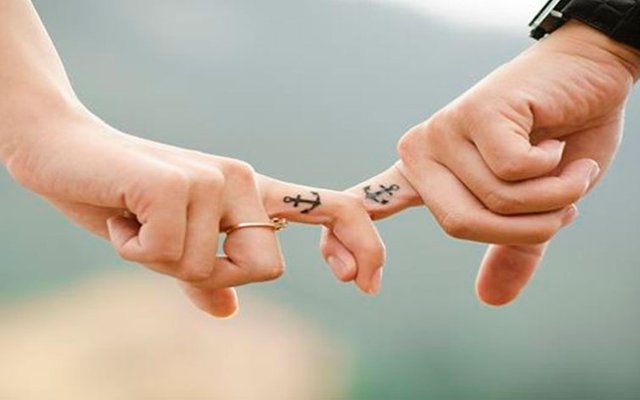That the opposite poles attract is the greatest romantic myth of our time.

It seems that everyone agrees that opposites attract. Whether young people or elderly people, happy couples or couples in crisis, single or married: everyone is convinced that it is true. Several relationship experts have written books based on this hypothesis and, in fact, it is something that people who are looking for a partner have assimilated, where up to 86 percent say they are looking for someone with opposite characteristics.
The problem is that what is good for magnets can not always be applied to love. As explained in my book, "Great Myths of Intimate Relationships: Dating, Sex and Marriage" (Great Myths of Intimate Relationships: Dating, Sex, and Marriage), people are often attracted to those people they resemble. , and not the other way around.
I love that you are like me
If people are really attracted to the opposite people, they have been the subject of many scientific studies. Researchers have looked for the best combination for romantic couples: those that are similar, those that are different or those that are opposite? Scientists call these three possibilities as the homogeneous hypothesis, the heterogeneous hypothesis and the complementary hypothesis, respectively.

The clear winner is the homogeneous hypothesis. Since the 1950s, social scientists have conducted more than 240 studies to determine if similarities in character, personality traits, external interests, values and other characteristics lead to attraction. In 2013, psychologists Matthew Montoya and Robert Horton examined the total set of all these studies with a meta-analysis and realized that there is an irrefutable link between appearing and being interested in the other person.
In other words, there is clear and convincing evidence that God raises them and they come together. For human persons, the attractiveness of similarity is so strong that it exists in different cultures.
Since similarity is related to attraction, it makes sense that people in stable relationships tend to resemble each other in many ways. Sometimes this is called selective matching although this term is used more often to describe the way in which people with similar levels of education, economic resources and physical appearance tend to mate.
None of this has to mean that opposites do not attract. Both the homogénica hypothesis and the complementary hypothesis could be true, but the question is whether there is scientific evidence to confirm that the opposite people may be attracted in some cases.
Compensate for my weaknesses with your skills

In many cases love stories are about people who find a couple that seems to have the qualities they lack, such as the case of the good girl who falls in love with the bad boy. In this way, they seem to complement each other. For example, one spouse may be extroverted and sociable while the other half is shy and serious. In this case, it can be understood that both parties to the relationship think that the other person is an idea because one's strengths complement the other's weaknesses. In fact, it is easy to imagine the friends or family of a shy person trying to match her with an outgoing person to let go a little. The question is whether people really look for complementary partners or is something that only happens in movies.
But it turns out that it's pure fiction. In short, there is no scientific evidence to show that differences in personality, education, political tendency, family environment, religion or other characteristics are more attractive.
For example, in one study the researchers found that college students preferred potential partners whose description was similar to themselves or the ideal version of themselves instead of those whose description was complementary. Other studies support this idea. For example, introverts are not more attracted to extroverts than to any other type of person.
Why are we so sure that opposites attract?
Despite all the evidence, the myth of heterogamy still exists and is probably due to different factors.
The first thing is that contrasts tend to draw more attention. Although the couple has many things in common, they will usually discuss the things that differentiate them.

In addition, there is evidence that small differences between spouses may increase over time. In their self-help book "Reconcilable Differences", psychologists Andrew Christensen, Brian Doss and Neil Jacobson describe how couples adopt complementary roles over time.
For example, if one member of the couple is a little more funny than the other, the couple will end up adopting a routine in which the person who is a bit more funny becomes "the funny" or "the funny" of the couple , while the other person will be relegated to the role of "the serious" or "the serious". Scientists have shown that it is true that couples become more complementary over time; Although they are very similar at the beginning, they will find ways to differentiate themselves little by little.
After all, the attraction to people who are different has no comparison with the attraction to similarities. People still think that opposite poles attract each other, when in fact similar couples become a little more complementary over time.